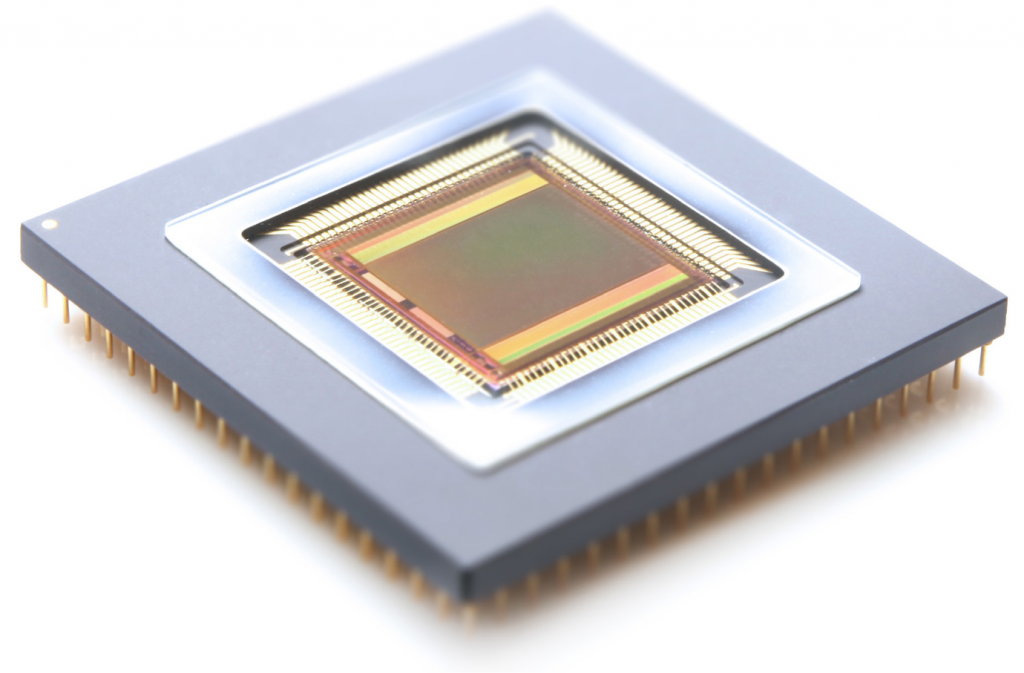This article was originally published at Basler's website. It is reprinted here with the permission of Basler.
There are two types of image sensors for industrial cameras on the market: CCD and CMOS sensors. The right sensor for any given job is a case-by-case question. At the same time, the trend seems to be toward CMOS sensor technology as the wave of the future. This should come as no surprise, as CMOS sensors have made major strides in recent years in two important parameters for area and line scan cameras, namely image rate and noise level. Since the beginning of 2015, it has become official that CMOS technology will be the future technology.

What Exactly Does a Sensor Do?
Both CCD (Charge Coupled Device) and CMOS (Complementary Metal Oxide Semiconductor) sensors convert light (photons) to electrical signals (electrons). The sensors differ primarily in their underlying technological setup. Basler's developers have the option to choose whichever of the two sensor technologies best fits a given camera's intended use.
Modern CMOS Sensors Are Often Superior to CCD Sensors
CMOS sensors have undergone significant upgrades in recent years, in many cases surpassing CCD sensors. Their high speeds (frame rate) and resolution (number of pixels), their low power consumption and, most recently, their improved noise characteristics, quantum efficiency, and color concepts have opened them up to applications previously reserved for CCD sensors.
The improvements to CMOS technology and the strong price/performance ratio in these sensors make CMOS sensors increasingly attractive for industrial machine vision. In particular, the very high frame rates that can be achieved, almost without any compromise in image quality, are one of the primary hallmarks of the current generation of CMOS.
Given the progress made in recent years, many more interesting developments can be expected down the road as well.
- High speeds (frame rates)
- High resolution (number of pixels)
- Strong dynamic performance
- Low power consumption
- Improved noise performance
- Improved quantum efficiency
- Improved color concepts
- Good price/performance ratio
Given the key properties of today's CMOS technology, this technology seems destined to gain the upper hand.

CCD vs. CMOS: What Are the New Trends? Read What Henning Tiarks, Director of Marketing at Basler, Has Observed on the Market.
The USB 3.0 interface will be combined with new CMOS technology. Does that mean that CCD technology is not used anymore?
No, it can still be a good option, particularly for users who only want to change their interface technology. In those cases, retaining the sensor already in use reduces the effort and cost associated with changing. Staying with the CCD sensor enables a quick and safe change.
What challenges are brought by the move towards CMOS technology?
For camera manufacturers, this brings some very exciting technical challenges. The new sensors must be integrated into the de-facto standard footprint of 29 mm x 29 mm. Besides, these sensors may require additional electronics and other hardware that must fit into the housing as well. Once this is managed it will allow customers to really benefit from the new sensors that in many cases will replace existing cameras of the same size. The second challenge is purely performance-driven. If you have those sensors in a small form factor you want to make use of the performance they offer. That means that, beyond Gigabit Ethernet, USB 3.0 is a must-have interface. Combining both interfaces with the small camera size is a good challenge!
What will the future bring regarding modern cameras?
The future looks very promising for modern cameras and camera technology! Most interesting is the increasing number of new CMOS sensors reaching the camera market. Those sensors come with impressive specs in terms of image quality and frame rate, defining a new category of value for money.
Let’s talk about the camera resolution. Will there be any major breakthroughs?
For the first time, we expect the whole range of standard resolutions from VGA to 5 megapixels and above to be covered by CMOS technology. This technology will become relevant for all existing and new applications in machine vision as well as in applications away from the factory floor, such as medical or intelligent traffic systems. Beyond that it is also becoming clear that the USB 3.0 interface in combination with the new CMOS sensor technology will fuel fast growth for USB 3.0, due to the perfect match in terms of performance.
This sounds very promising. What about the image quality?
Of course, quality is always important. It will be a challenge to optimize the image quality of those new CMOS sensors to fit the market expectation. This requires deep knowledge of CMOS sensor technology. If you have that, the outcome will be small, fast and image-quality-wise perfect cameras, that offer more value than ever before – our ongoing goal at Basler.
![]()
The Basler Camera Selector
The Basler Camera Selector provides you with an overview of all Basler area scan and line scan cameras. This tool determines the right cameras for your needs based on a variety of criteria, including sensor technology, resolution and optical dimensions.
Check out our Area Scan Camera Selector and our Line Scan Camera Selector.
For more information on this topic, please see our white paper on "CMOS and CCD — Small Differences Along the Way from Light to a Signal"


